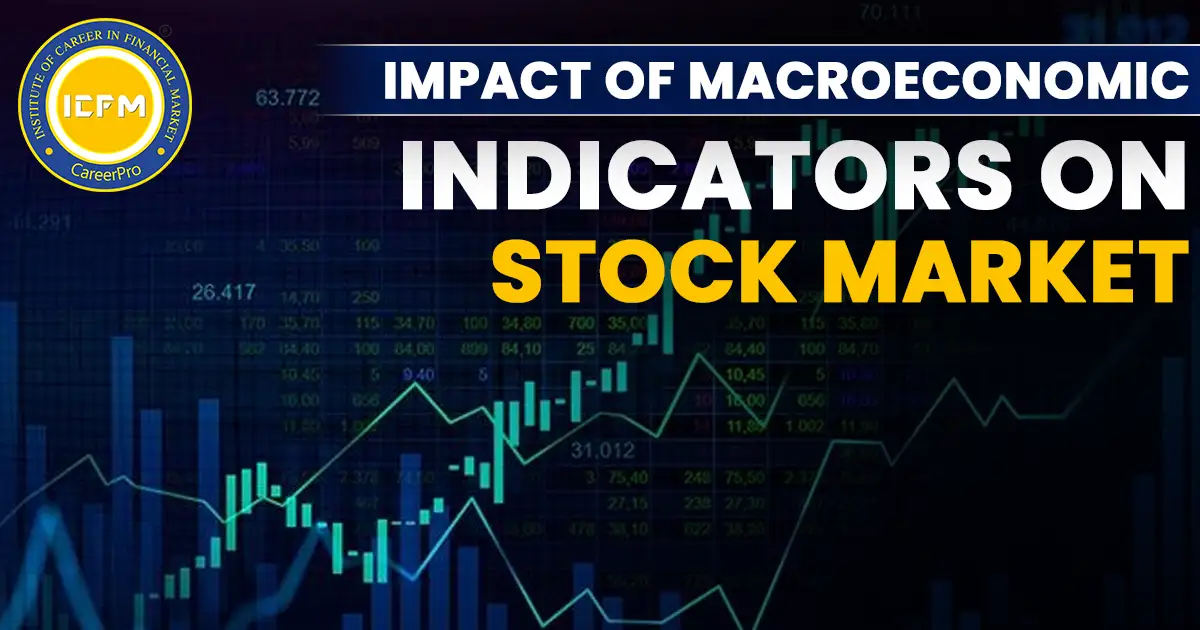The stock market is a dynamic place where countless, varying factors combine to set effective price movements on it. Out of those factors, macroeconomic indicators play a pivotal role as the gauges not only signal today's state of the economy but also forecast the future. Understanding how these indicators impact the stock market is important both to investors and traders, and also to policymakers. Let's zoom now into some of the most important macroeconomic indicators and see their impact in more detail.
Macroeconomic Indicators Defined
Macroeconomic indicators are basically statistical figures indicating an economic movement and condition in a country. Generally, there are three categories or types of these indicators, and they are leading, lagging, and coincident.
• Leading indicators are the types used to forecast the future for some economic trends. A good example is stock market returns and manufacturing orders.
• Lagging indicators are those indicators that are used to determine the long-term trends. An excellent example is the unemployment rate and GDP.
• Coincident indicators are those that are used to turn the current status of the economy. A good example is GDP and industrial production.
Key Macroeconomic Indicators and Their Impact on the Stock Market
1. Gross Domestic Product (GDP)
Impact on the Stock Market: GDP represents the total value of all goods and services produced in the nation; it is also often regarded as an indicator of the nation's economic activity and growth. Growth in the Gross Domestic Product often leads to an increase in investor confidence, as it indicates growth. The investors rush to the stock markets, which eventually increase the various stock prices. On the other hand, a decline in GDP growth or a negative GDP growth rate (recession) would bring downturns in the market. This is because investors would expect lower corporate earnings and uncertainty in the economy.
2. Interest Rates
Impact on the Stock Market: The interest rates that the central bank sets affect the cost of borrowing and consumer spending. Lower interest rates mean that it costs less for businesses to borrow to invest; hence, they will invest more, and consumers will also spend more. This ultimately means that stock prices in the market will generally rise. On the flip side, high interest rates enhance the cost of borrowing, lowering the spending and investing levels that may dim stock prices. For that matter, the rate decisions by the Federal Reserve have a significant impact on market sentiment and valuation.
3. Inflation Rate
Impact on the Stock Market: Inflation refers to the general rise in prices of goods and services, which results in the decline of buying power. Moderate inflation usually indicates a healthy level of economic activity. However, excessive inflation damages investors' profit margins, and, in turn, may create higher interest rates that are damaging to stock prices. Conversely, deflation can lead to lower consumer spending and lower corporate profits, leading to a negative impact on stock prices.
4. Unemployment Rate
Impact on the Stock Market: The unemployment rate is the ratio of unemployed individuals seeking employment to the total labour force in the economy. Low rates of unemployment are indicative of a strong economy, and hence more consumer expenditures coupled with high corporate profits can drive prices of stocks to rise. High rates of unemployment will imply economic dissatisfaction and more consumer money will be withheld while corporate profits will be low; therefore, it may lead to a downturn in the stock market.
5. Consumer Confidence Index(CCI)
Impact on the Stock Market: CCI gauges whether consumers feel positive or negative about what lies ahead in the economy. If optimism is high, then so is consumer spending, which upsurges economic growth and stock prices. In case, if optimism is low, then the opposite is correct.
6. Manufacturing Activity
Impact on the Stock Market: Indicators of such types of indices include the Purchasing Managers' Index (PMI), which shows the health of manufacturing. PMI above 50 shows expansion, and below 50 indicates contraction. Good manufacturing activity is often synonymous with growth and will have a positive effect on stock, especially those relating to industrial activity.
7. Trade balance
Impact on the Stock Market: It is the measure of Exports less Imports, to value the currency, and further calculate the growth of the economy. A surplus balance in trade would thereby strengthen the currency, which increases investor confidence; hence, stock prices are pushed upwards. On the other hand, a trade deficit can lead to currency weakening with its effects being felt through the volatility of markets and depressing stock prices.
8. Retail Sales
Impact on the Stock Market: Retail sales data reflect trends in spending by consumers. Good retail sales reflect good demand from consumers and favour stock markets, especially stocks of companies in the retail sector. Weak retail sales may indicate lower trends in consumer spending that may lead to a slowdown in economic growth. The same is generally reflected in lower stock price quotes.
9. Housing Starts
Impact on the Stock Market: Housing starts, in general, refer to the number of new projects for the construction of residential houses that begin construction for a given period. Under normal circumstances, when housing starts to increase, it will mean that the economy is okay, taking into consideration that there is more need for the building materials and the stocks associated with the companies. However, at exceptional times when housing starts decline can indicate economic weakness, which can turn against the stock market.
10. Government Debt Levels
Impact on the Stock Market: High levels of government debt, in comparison to the country's GDP, can have an impact on the confidence and stability of the markets. It leads to a situation of too much debt to effectively implement fiscal policies, by the government, which may lead to a rise in interest rates and inflation, thereby affecting the prices of stocks. Investors are always vigilant about the level of debt that equips them with information on the risk that is associated with fiscal sustainability.
Relation of Indicators to Market Sentiment
At times, the relationship is interrelated. For instance, a strong GDP with low levels of unemployment increases consumer confidence, thus increasing corporate earnings and lifting stocks. Conversely, high inflation and rising interest rates can erode spending power and corporate profits, hence leading to market sell-offs.
Conclusion
Macroeconomic indicators provide some very useful tools that aid in understanding and forecasting market movements. Any sight of these indicators will assist the investor in better anticipation of economic trends, informed investment decisions, and better risk management, whether you are a seasoned investor or a market newbie. Careful monitoring of these indicators will help you better negotiate the minefields that are synonymous with stock market dealings and exploit opportunities in what is an economically volatile landscape. This does not only prove handy but is an unavoidable imperative if one has to be a real successful investor.









